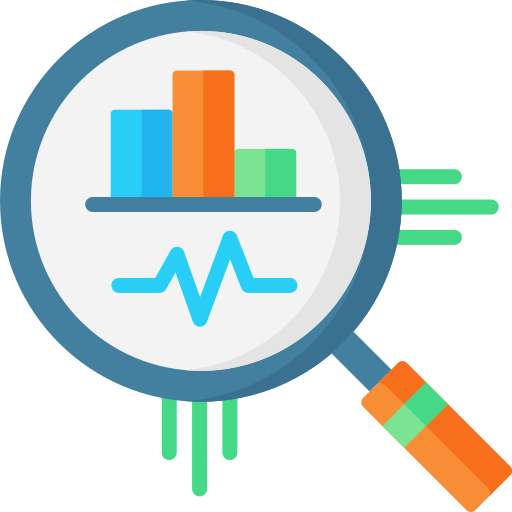User Guide to Understand Data Analytics Consulting
Difference Between Data Analytics and BI
While data analytics and business intelligence (BI) are related concepts, they are not the same.
Let’s understand the difference between the two:
Data Analytics: Data analytics involves examining, transforming, and analyzing
data to uncover
insights, patterns, and trends. It involves applying statistical and analytical techniques to raw
data to gain meaningful insights and make informed decisions.
Data analytics focuses on extracting valuable information from data sets, often using tools and
technologies like statistical modeling, data mining, machine learning, and data visualization.
Business Intelligence (BI): Business intelligence refers to the technologies,
strategies, and practices organizations collect, integrate, analyze, and present business
information.
It involves gathering and organizing data from sources, transforming it into meaningful information,
and delivering it to decision-makers through reports, dashboards, and visualizations.
Overall, data analytics focuses on data analysis to extract insights, while business intelligence
involves collecting, integrating, analyzing, and presenting data to support decision-making and
provide a comprehensive view of the business.
Data analytics is a subset of business intelligence, as it contributes to the analytical component
of BI.
Relationship Between Data Analysis and Data
Analytics
A few key characteristics of backend technologies separate the good from the great.
First and foremost, a good backend technology will be scalable. It handles increasing users and data
without becoming bogged down or slow.
Another important characteristic is extensibility. A good backend technology will allow new features
and functionality to be added easily without disrupting the existing codebase.
Finally, a good backend technology will be robust and reliable. It withstands heavy usage and
traffic without crashing or experiencing any major issues.
Tech Stack for Backend Development
Data Analysis:
Data analysis refers to examining, inspecting, and interpreting data to uncover patterns,
trends, and insights. It involves applying various techniques and methods to understand the data,
identify relationships, and derive meaningful conclusions.
Data analysis focuses on exploring and summarizing data to understand its characteristics better and
extract relevant information.
Data Analytics: Data analytics encompasses a broader scope and builds upon data
analysis. It involves applying advanced techniques and algorithms to large datasets to extract
insights, make predictions, and take data-driven actions.
Data analysis forms the foundation of data analytics. It involves the initial exploration and
examination of data to understand its structure and relationships.
Data analytics further analyzes data by employing advanced statistical and analytical techniques to
extract more profound insights, perform predictive modeling, and support decision-making processes.
Key Steps of a Typical Data Analytics Consulting
Project
A typical Data Analytics Consulting project involves several key steps to ensure a successful and
effective outcome. These steps may vary depending on the project’s scope and complexity, but the
fundamental stages include:
Project Definition and Scope: This initial step involves understanding the
client’s objectives, challenges, and desired outcomes. The consultant works closely with the client
to define the project’s scope, establish clear goals, and identify key performance indicators (KPIs)
that will measure the project’s success.
Data Collection and Preparation: Data is the foundation of any data analytics
project. In this step,
the consultant gathers relevant data from various sources, including structured databases,
unstructured text, or external data sets. The collected data is then cleaned, transformed, and
prepared for analysis to ensure its accuracy and consistency.
Exploratory Data Analysis (EDA): EDA is a critical step that involves exploring the
data to understand its characteristics, patterns, and relationships. Data visualization techniques
are often used to gain insights and identify potential trends or outliers relevant to the project’s
objectives.
Data Modeling and Analysis: In this stage, the consultant selects appropriate data
analysis
techniques and models based on the project’s goals. This may include descriptive analytics
(summarizing data), predictive analytics (making predictions), or prescriptive analytics (optimizing
decisions). Statistical methods and machine learning algorithms are commonly used for data modeling
and analysis.
Interpretation of Results: Once the analysis is complete, the data analytics
consultant interprets
the findings and translates them into meaningful insights for the client. The results are aligned
with the project’s initial objectives, and the consultant identifies actionable recommendations
based on the data-driven insights.
Data Visualization and Reporting: To communicate the results effectively, the
consultant creates
visualizations and reports that convey complex information clearly and understandably.
Visualizations such as charts, graphs, and dashboards are used to present the insights to
stakeholders.
Implementation and Integration: If the project involves the development of new
data-driven systems
or tools, the consultant works with the client to implement and integrate these solutions into the
existing infrastructure.
Ongoing Monitoring and Support: Data Analysis Consulting is not a one-time event;
it involves
continuous monitoring to assess the effectiveness of implemented solutions. The consultant provides
ongoing support to ensure the data analytics solutions remain relevant and deliver value over time.
Knowledge Transfer: Throughout the project, the consultant shares knowledge and
best practices with
the client’s team, empowering them to leverage data analytics effectively in their future endeavors.
Data Analytics Consulting projects can successfully guide organizations towards data-driven
decision-making and strategic improvements by following these key steps.

































